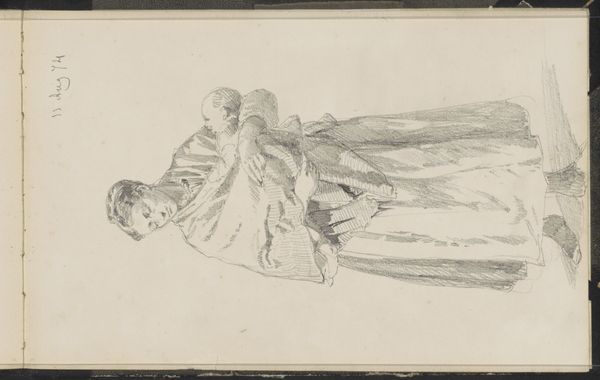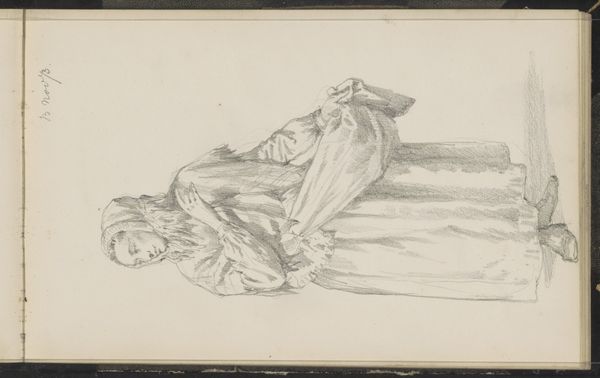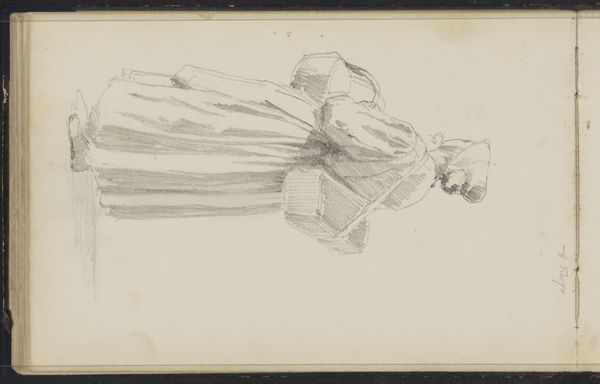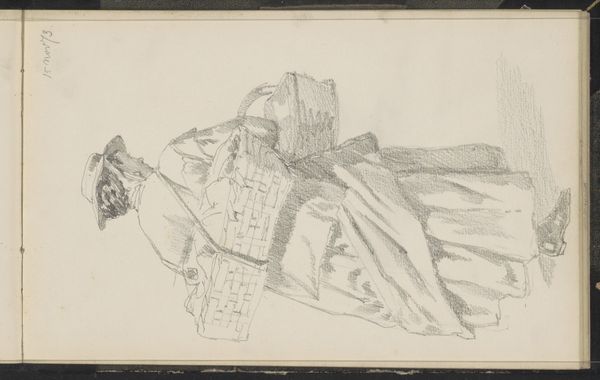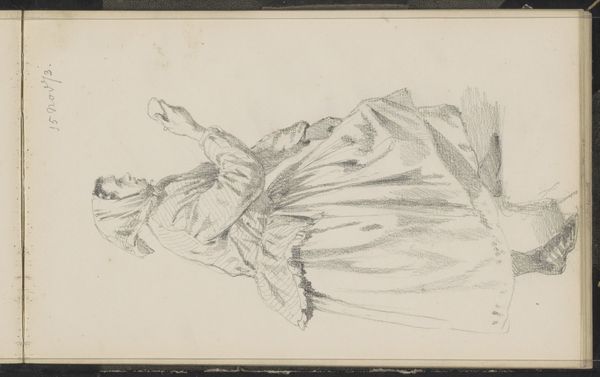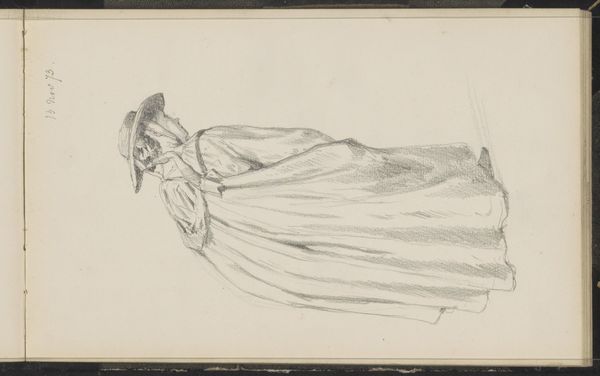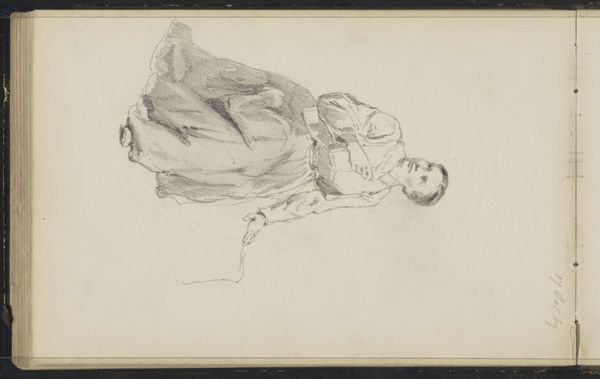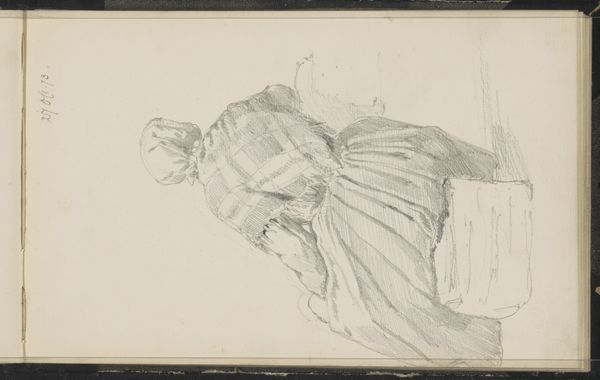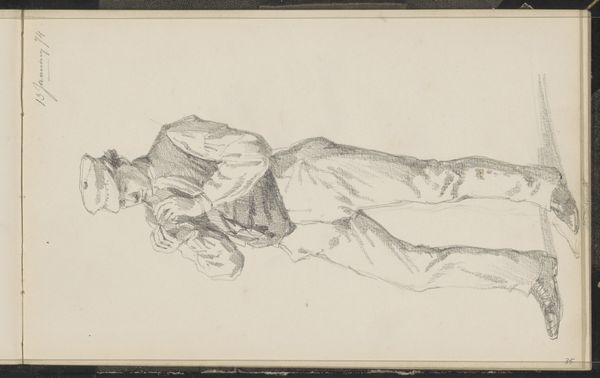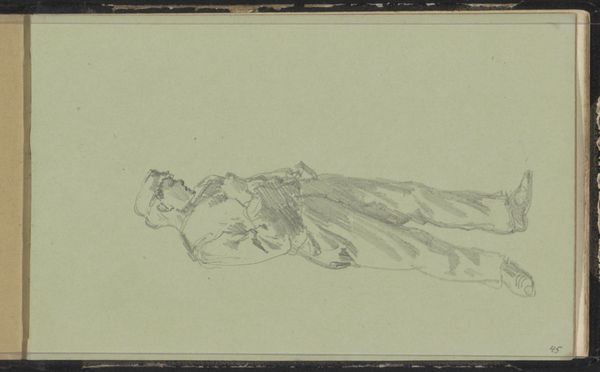
drawing, paper, pencil
#
portrait
#
drawing
#
toned paper
#
light pencil work
#
ink drawing
#
pen sketch
#
pencil sketch
#
figuration
#
paper
#
personal sketchbook
#
ink drawing experimentation
#
pen-ink sketch
#
pencil
#
sketchbook drawing
#
sketchbook art
#
profile
#
realism
Copyright: Rijks Museum: Open Domain
Curator: We're looking at "Voorovergebogen vrouw met een teil," or "Woman Leaning Forward with a Basin," a pencil and ink drawing, possibly from 1874, by Cornelis Springer, housed here at the Rijksmuseum. Editor: It strikes me immediately as a work of quiet intimacy. The delicate pencil work captures a fleeting moment, almost like a stolen glance. There’s a vulnerability in the woman’s posture, the bowed head suggesting labor and perhaps exhaustion. Curator: Indeed. Springer was primarily known for his cityscapes, documenting the urban environment. But this drawing gives us a glimpse into the everyday life of women in that period. Her bent posture speaks to the societal expectations placed upon women and the often-invisible domestic labor they performed. The rough quality gives us the impression this was likely one of many drawings found in the artist's personal sketchbook. Editor: It does feel deeply personal, a moment of observation rather than a staged portrait. Consider the material conditions of the time; access to clean water and proper sanitation was a class issue. Her labour contrasts starkly with that of better-off woman who could have delegated the manual labour to domestic help. The way she is angled, the downcast gaze - do you see an element of social commentary in its quiet realism? Curator: It certainly invites a layered reading, where the composition can reflect social and economic hierarchies. The institutional history of museums themselves often obscures these stories, but drawings like this one can recover and amplify the narratives of working-class individuals who otherwise remain voiceless. Editor: Absolutely. We can imagine Springer, moving between the structured cityscapes he’s famous for and these intimate glimpses into lives defined by different spaces and different roles. This work seems to propose this woman as a legitimate subject worthy of study and reflection, perhaps hinting at the complexities of female experience within that historical moment. Curator: It serves as a stark reminder of how far we’ve come, or, in some instances, how much further we still have to go, regarding gender equity and the recognition of undervalued labor. I am particularly affected by her covered hair, connoting, perhaps, piety or some constraint that would make her unfree in modern society. Editor: This work lingers in the memory precisely because of that tension between art and social responsibility. Its raw honesty, achieved through such simple means—paper, pencil, and ink—invites us to look more closely at the lives of women then and now.
Comments
No comments
Be the first to comment and join the conversation on the ultimate creative platform.
